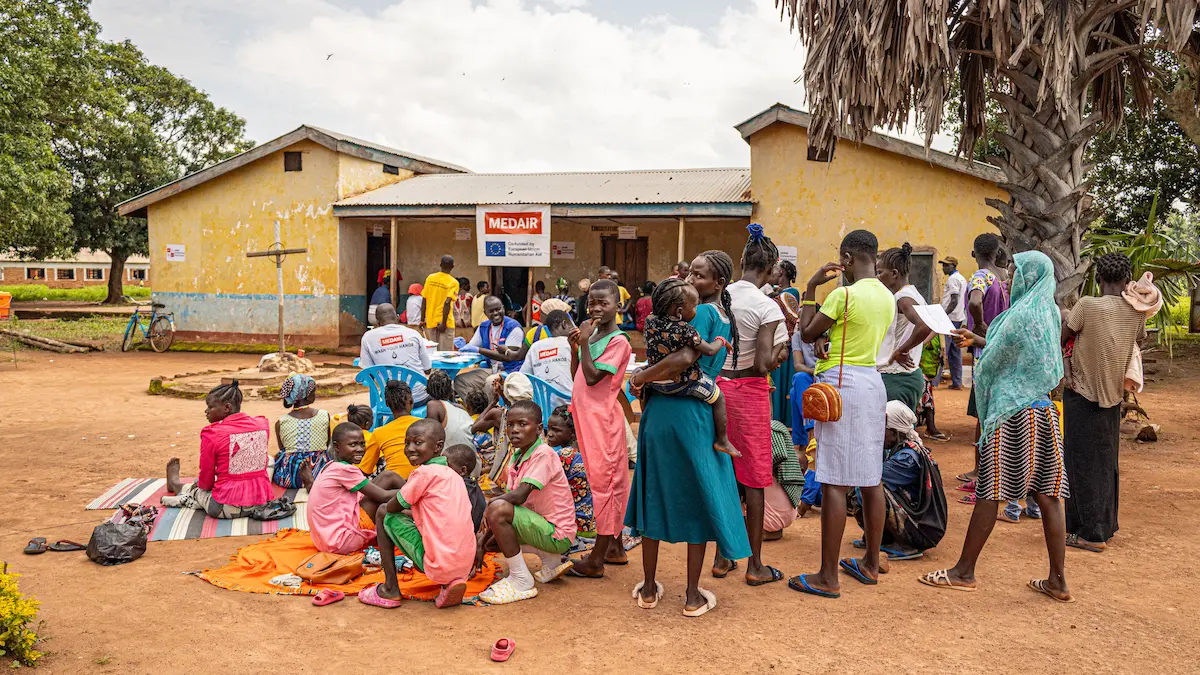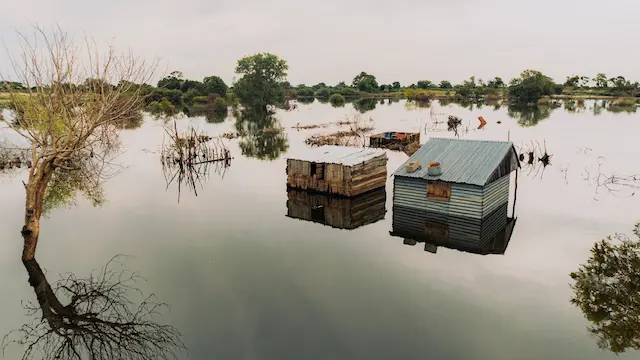Mobilising new resources: alternative humanitarian funding for a resilient future

Abstract: As government support for humanitarian aid declines, we need fresh ways of funding so we can keep our mission going strong. This article looks at innovative funding approaches, such as corporate partnerships, impact investments, and contributions from high-net-worth individuals. By diversifying funding streams, organisations can respond more quickly in emergencies and support long-term development in the communities they serve.
Innovative approaches to humanitarian financing
As traditional government funding for humanitarian aid declines, humanitarian organisations like ours face significant challenges in maintaining their operations. Many have had to scale back their programmes, limiting their ability to reach vulnerable populations. To navigate these challenges, Medair is exploring alternative funding models that can provide the necessary resources to respond effectively to emergencies and facilitate handover to long-term development partners.
We’ve been motivated to make our impact stronger, while keeping our values and humanitarian principles at the centre. This isn’t about chasing growth for its own sake, but about finding smart ways to keep our work effective. After reviewing many options, we created a shortlist worth sharing:
- Blended finance - combines public and private resources to leverage additional capital for humanitarian projects, enhancing the flow of funds and maximizing impact.
- Thematic funding - directs financial resources towards specific sectors, such as health or climate adaptation, aligning donor interests with targeted, impactful interventions.
- Working capital facilities - bridging loans and recoverable grants provide liquidity to maintain operations during funding gaps.
- Humanitarian impact bonds - private capital to fund projects, with returns linked to the achievement of specific outcomes, shifting financial risk to investors.
- Social impact bonds – investors back social programmes with returns based on achieved outcomes, addressing complex social issues through measurable success.
- Marketplace mechanisms – online platforms that connect organisations with investors and donors, facilitating the exchange of funds for social impact.
- Outcomes contracts - agreements where funding is contingent upon the achievement of predefined results, ensuring efficient resource allocation.
- Parametric insurances - provides financial protection against specific risks, with payouts triggered by predefined parameters, ensuring rapid response to emergencies.
- Climate adaptation - initiatives that help communities adjust to the adverse effects of climate change, promoting sustainable development.
Corporate Social Responsibility: a new frontier in humanitarian aid
Corporate Social Responsibility (CSR) has become a core part of business strategy and philanthropy, shaping awareness of social and environmental issues. The move from shareholder capitalism to stakeholder capitalism means more companies are prioritising employees, customers and community interests alongside profit.
Regulations surrounding Environmental, Social, and Governance (ESG) standards and similar regulations guiding Corporate Social Responsibility (CSR) could open long-term opportunities for humanitarian organisations. However, hurdles remain – such as the need for agreed-upon impact standards and tackling the risks of 'greenwashing'.
The World Economic Forum (WEF) has been pushing for innovative financial models to help close the funding gap needed for the Sustainable Development Goals (SDGs). Recently, Klaus Schwab, the founder and former executive chairman of the WEF, emphasised the urgent need for innovative financial models to bridge the significant funding gap required to achieve the Sustainable Development Goals (SDGs). Schwab highlighted the importance of leveraging private investment and creating development finance as an asset class to ensure that financial resources are directed towards impactful and sustainable solutions.
When Klaus Schwab refers to "asset class" in the context of sustainable development finance, he is advocating for the creation of a new category of investments specifically designed to achieve social and environmental outcomes. By treating development finance as an asset class, Schwab emphasises the need to attract private investment into projects that deliver measurable positive impacts, such as reducing poverty, improving health, and combating climate change.
"We’re not here to pursue just our own interests, but as a community of purpose to improve the state of the world," said Klaus Schwab
Diversifying funding streams for greater resilience
The 2024 Global Report on Internal Displacement (GRID) highlights the urgent need for greater investment in resilience: by the end of 2023, 75.9 million people were living in internal displacement, many driven by conflict and violence. These numbers show just how urgently we need to invest in resilience, so communities can cope better with conflict and disasters.
The importance of diversification
Relying on one funding source leaves organisations vulnerable. By combining government grants, private donations, corporate partnerships, and new financial tools, we reduce risk and build stability.
Effective consortiums and partnerships
Forming consortiums and partnerships is a key strategy for promoting a blended approach to funding. By pooling resources, expertise, and networks, organisations can achieve more than they could alone.
Full spectrum approach
Funding falls broadly into three categories:
- Emergency funding: this type of funding is allocated for immediate relief efforts in response to crises such as natural disasters, conflicts, or pandemics. The primary goal is to save lives, alleviate suffering, and provide urgent assistance, including food, shelter, medical care, and protection.
This type of funding is often more readily available due to the immediate and visible nature of crises. Governments, international organisations, and private donors are typically quick to respond to urgent needs, providing substantial resources for disaster relief and humanitarian aid. However, it is usually short-term and focused on immediate response rather than long-term recovery and resilience.
- Nexus funding: nexus funding bridges the gap between emergency response and long-term development. It aims to address the root causes of crises and build resilience by integrating humanitarian, development, and peacebuilding efforts. This approach, often referred to as the "triple nexus," focuses on reducing vulnerabilities, enhancing local capacities, and promoting sustainable solutions.
Funding for nexus initiatives is growing but remains limited. The complexity of integrating humanitarian, development, and peacebuilding efforts requires coordinated approaches and flexible funding mechanisms. While there is increasing recognition of the importance of nexus funding, securing consistent and adequate resources can be challenging.
- Development funding: this type of funding supports long-term projects aimed at sustainable development and poverty reduction. It focuses on areas such as education, healthcare, infrastructure, economic development, and governance. Development funding seeks to create lasting improvements in the quality of life and economic stability of communities.
Long-term development funding is generally more stable and predictable, often coming from government aid budgets, international financial institutions, and development agencies. However, it can be subject to political and economic fluctuations, and there is often greater competition for resources among various development priorities. Additionally, the focus on immediate crises can sometimes divert attention and funding away from long-term development goals.
Working across the spectrum of funding helps address both urgent needs and long-term challenges. However, there’s also a risk of spreading resources too thin, so it’s important to balance breadth and depth.
Conclusion
As Medair enters a new five-year strategy period, we will remain focused on emergency humanitarian programming, while also seeking new types of resources to tackle underlying challenges, like climate adaptation and resilience. We’ll also explore outcomes-based funding and recoverable finance.
These steps will help us respond faster in emergencies and build lasting resilience together with the communities we serve.


.jpg)